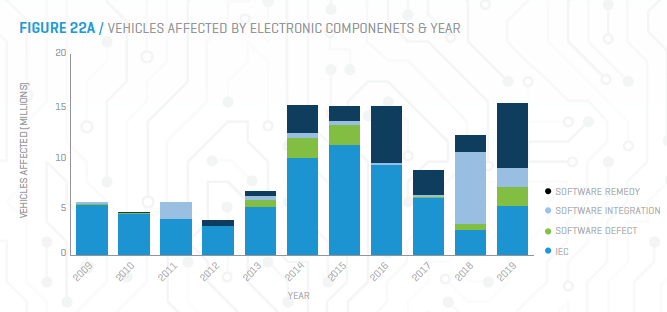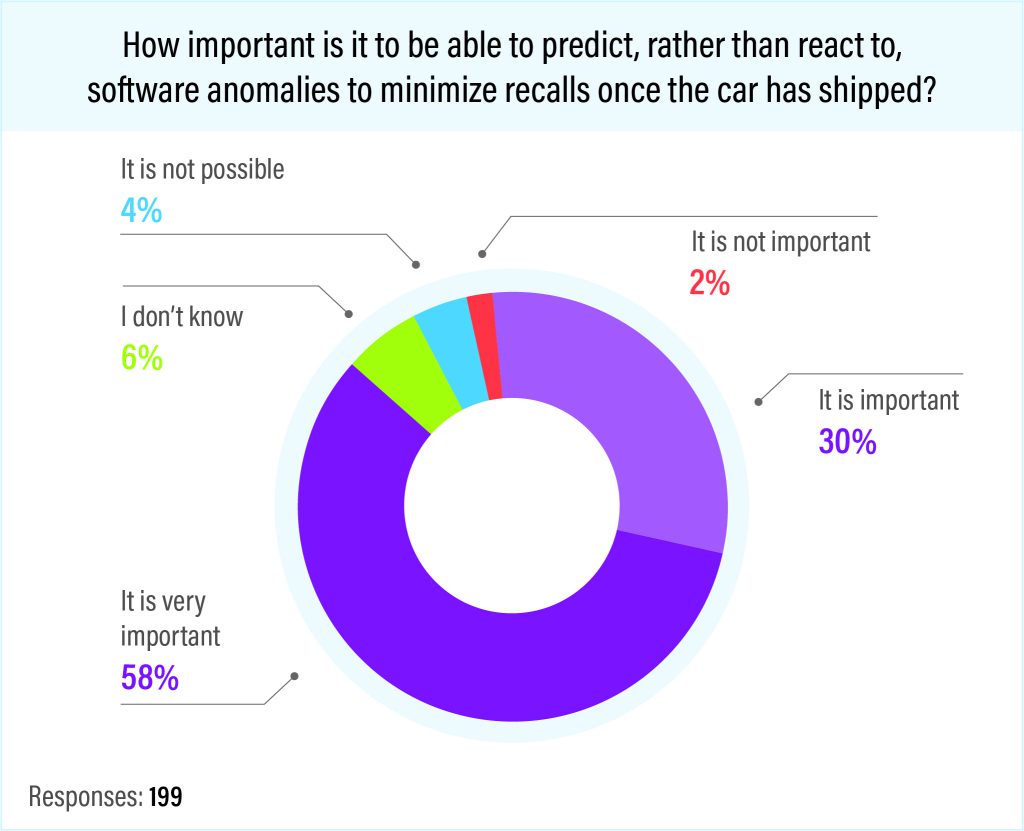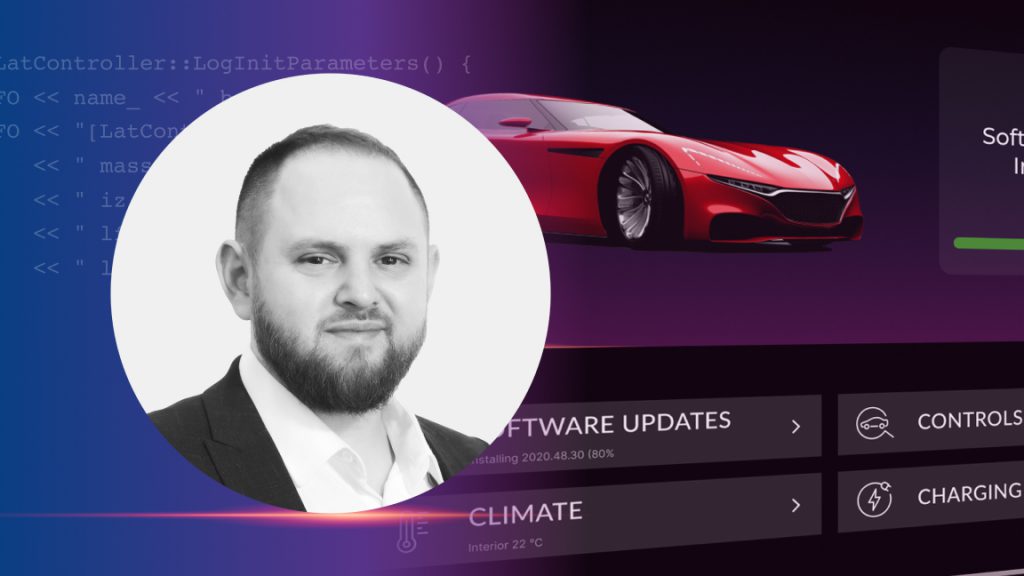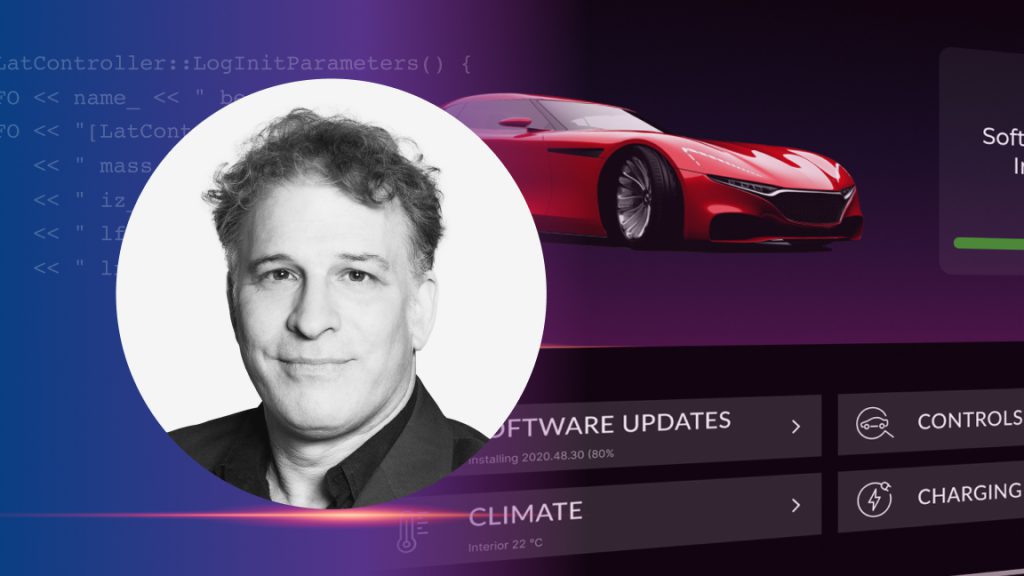WHAT:
With software-related recalls on the rise, is it time to embrace predictive software maintenance?
WHY you should read this:
- We highlight the main trends from Stout’s 2020 report
- We explore the significance of these trends: Software-related recalls and OTA updates
- We dig deeper and explore what these trends mean for the industry
- We question whether recalls are necessary or whether cars could be serviced remotely
Stout’s 2020 Automotive Defect and Recall Report got us thinking about one of Elon Musk’s tweets from 2013. In response to Tesla having to recall nearly 30,000 of its sedans because of a fire risk caused by the vehicle’s charging equipment overheating, Musk tweeted: “The word “recall” needs to be recalled”. And in this case, that’s just what Tesla did by offering an over-the-air (OTA) software update instead of actually recalling the faulty vehicles. In many ways, this tweet was a watershed moment for the industry. And this idea of software-related recalls is echoed strongly in the latest Stout report.
As we find ourselves at the beginning of the new year, we thought it would be helpful to reflect on some of the main trends highlighted in Stout’s 2020 report. Because reports like this set the stage for what’s to come and in some senses hint at the bigger issues OEMs and suppliers may be forced to grapple within the coming year. The report highlights a trend we all know isn’t going anywhere anytime soon and something that a relentless maverick and visionary like Musk already knew in 2013: That software-related innovation is going to play an increasingly important role in new automotive functionality, and that software-related recalls will not be far behind. The report clearly shows this trend.
But all this got us thinking: Could there be a better, more efficient way of dealing with software recalls? Perhaps it’s time to embrace predictive software maintenance.
Change is in the Air: Key Trends and Highlights
In many ways Stout’s 2020 Automotive Defect and Recall Report highlights what we already know to be true: Software-related recalls are on the increase.
The report highlights the fact that:
- In 2019 we saw a significant increase in the number of software-related defects when compared to previous years: There was a ~ 10% increase in software-related defects from 2018 to 2019 [See Figure 22B page 49]
- Software-related recalls reached record numbers in 2019 with 2 of the largest recalls of the year (including a safety recall) involving software
- An estimated 6.5 million vehicles that were recalled for electronic component defects received software remedies, making 2019 the year with the greatest number of software-based campaigns [See Figure 22A page 49]
Interestingly, the report also hints at the fact that while more and more manufacturers are warming up to the idea of OTA updates, they still aren’t widely used (for the entire vehicle). We predict that this is going to change. In fact, from conversations we’ve had with several of our clients and announcements from various car manufacturers, we know this is changing. We predict that full-vehicle OTA updates will become increasingly popular as more and more manufacturers embrace the technology. And while this innovation will enable remote repair and may even lessen the load when it comes to recalls, we shouldn’t stop here. We shouldn’t just be striving to ease the load and make recalls more efficient but rather focusing on predictive software maintenance. This means being able to predict which software is causing the issue before it causes the vehicle to fail, and using OTA updates, we’ll be able to fix it before any harm is caused.
Predictive Software Maintenance to the Rescue
The Stout report highlights the increase in software-related recalls and hints at the role OTA updates will come to play. But we’d argue it doesn’t go far enough. Because of innovations like OTA updates, we see the emergence of a powerful trend: Predictive software maintenance. But what does that really mean? And what will this mean for the automotive industry?
Essentially, predictive software maintenance is a shift away from the tried and trusted reactive approach which only fixes problems after they have caused what often turn out to be catastrophic failures. This is unplanned, reactive maintenance and is how things have always been done (until now). On the other hand, predictive maintenance relies on real-time data and machine learning algorithms to detect anomalies and possible defects before they need fixing. Such an approach anticipates problems before they occur, making it more efficient and cost-effective.
According to our 2020 Automotive Software Survey, the ability to perform predictive maintenance on automotive software is a desired capability within the industry. Based on the survey, more than 88 percent of the 200 respondents think the ability to predict software anomalies is important or very important.
An example of predictive maintenance is a vehicle’s brakes which tend to wear slowly over time. The garage does not wait for the brakes to fail before replacing the brake pads, but instead, the garage mechanic will use his experience to predict when they will fail and will suggest to replace them in advance. Line-Of-Code Behavior technology does the same for the vehicle software.
Line-Of-Code Behavior technology enables manufacturers to be proactive rather than reactive to software failures, enabling pre-error detection. This technology leverages machine learning algorithms to monitor the behaviour of the software functions over time and predicts when the software will fail. In addition, it detects the exact lines of code causing the problem, shortening the error-resolution time and giving the manufacturers the necessary time to fix, test and certify the software before it is released. Using OTA updates the new software can then be pushed to the vehicles seamlessly before the software has failed in the field, paving the way for a seamless continuous improvement process.
Conclusion
There are many takeaways from Stout’s 2020 Automotive Defect & Recall Report. What stood out most for us was the significant uptick in software-related recalls. The report also hints at the increasing reliance on OTA updates. This shines a light on where the industry is headed. It also makes it clear that with the right technology and innovation, we could soon be servicing cars remotely instead of recalling them. For an industry so focused on recalls, this is a major wake up call and an opportunity to do better.
Learn more about our approach to predictive software maintenance.








 11 min read
11 min read
